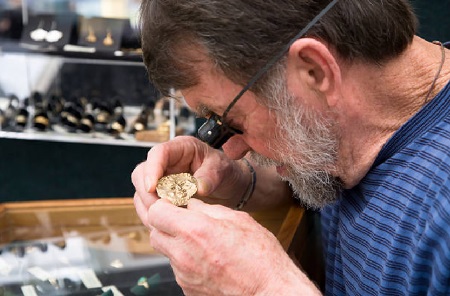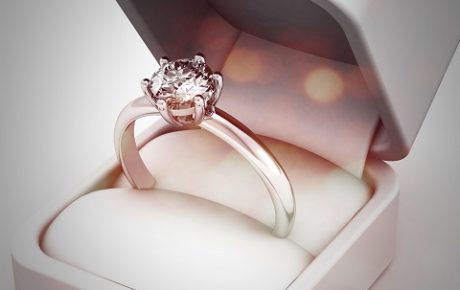How to Choose a Jewelry Insurance Policy Correctly

Should you insure your valuables against theft?
If you are a risk-averse person who needs safeguards in place when things go wrong, you may want to consider getting an insurance policy to cover your jewelry and diamond rings.
As a consumer advocate, one of the problems I frequently come across is that claimants don’t get what they expect from the insurance companies when tragedy strikes.
In fact, many of them only realized they were insufficiently covered after filing a claim.
To be clear, the insurance industry is typically filled with pages of legal jargon and most consumers don’t completely understand what they are buying. In this write up, I hope to offer some useful tips to help you select the best type of policy that suits your needs and required level of protection.
If you’re already contemplating insurance for your valuable possessions, it’s crucial to extend your consideration to LIFE INSURANCE as well. Life insurance provides financial protection for your loved ones in the event of your untimely demise, ensuring that they are not burdened with financial hardships during a difficult time. However, navigating the intricacies of life insurance can be as challenging as understanding jewelry coverage. The industry is rife with complex terminology, and consumers often find themselves puzzled when deciphering policy details.
Don’t Make the Same Mistakes Others Commit
First of all, you should start by reviewing your homeowners or renters policy. It is very likely that you already have some kind of cover for personal property – like jewelry – under the policy.
If the current value of your jewelry far exceeds the maximum coverage offered, it may necessitate a separate policy to provide adequate protection.
When choosing a jewelry insurance company to work with, one of the things I look out for is their ability to give clear explanations about their policies and the type of liability they can take on.
In sales pitches, some agents may hold back on certain technical information which they expect you to read in the contract’s fine print. That’s why you always need to pay attention and read through the fine print carefully.
If there are any clauses you aren’t sure about, make sure you clarify them. If a company is not willing to explain the technicalities of their policies in a transparent and concise manner, look for another company that does.
Why You Need an Accurate Appraisal Document

Once you’ve chosen a company to work with and agreed on a policy, the next step is to find an independent appraiser to evaluate the value of your diamond jewelry. This is an important step especially if you intend to get a “Replacement Value” type of policy.
Why so? Let me give you a hypothetical scenario. If the company evaluates your jewelry and sets the appraised value at $20,000 when the true value of the jewelry is only $12,000, you can expect to get overcharged on your premium.
In the event of you lose your jewelry, the insurance company may get a replacement deal that is far below the set value, say for example $12,000. What is worth $12,000 in retail may only cost the insurance company $8,000 to replace.
This means that the insurance company actually profits at your expense on both ends!
That’s why it is always advisable to get an independent appraiser to make sure the value of your jewelry has been accurately assessed. This will also ensure you are paying the correct amount of insurance premium for its replacement value.
7 Questions to Ask Your Insurer Before You Use Them
1) Will the policy cover accidental loss and theft?
2) Are items lost during travel covered?
3) Do you need to have the piece of jewelry appraised?
4) In a loss, is the item replaced or is there a cash option?
5) Are there any kinds of deductibles?
6) Is there full value coverage on the item?
7) What are the fine-print clauses on jewelry care?
Lastly, there’s one final question you should ask yourself: is it really worth it to insure an item? Does it make economic sense to buy insurance for a jewelry piece which only costs $3,000? Would it be worth paying monthly premiums or would you be OK to replace the jewelry at your own costs?
Personally, I have never seen a need to purchase insurance for all the diamond rings I own. That’s because I live in a safe neighborhood and even if my wife lost a $10,000 ring, it is something I can replace with no financial difficulty.
With these tips in mind, I hope you are now better equipped to selecting the best insurance policy for your diamonds and jewelry. If you have any questions, feel free to leave a comment below.
<< Prev PageRelated Articles
Leave A Comment














7 Comments
I have enjoyed educating myself on your website. You seem to have educated yourself well and you are able to write in a clear and concise manner. I have a particular circumstance that I need help with and I hope you can assist.
I recently lost the diamond from my engagement ring. Aside from the emotional distress, now I may be having issues with my insurance company, Allstate. From 1983-2002 I insured the ring (setting was a simple 14k yellow gold Tiffany setting) for the GIA appraised value of $8000. In 2002, I had it reappraised ( different appraiser, but still GIA.) The value at this time was determined to be $12,000. My premiums were based on the dollar amount of the insured items. (Yes, the ring was separately scheduled and insured.) The GIA appraisal is not very detailed, compared to the reports I see in your website. My appraisal is this:
LADIES 14K YG 2.1MM PINCHED SHANK ENGAGEMENT RING W/A 6 PRONG WG
TIFFANY HEAD CONTAIN 1 RD BRILLANT CUT DIA WEIGH APPROX 1.35 CT CLARITY
VS-1 COLORI MODERATE YG FLUOR GROSS WEIGHT IS 2.79 GRAMS 12,000”
I reported the lost stone on a Sunday and on the very next Wednesday I received a check for about $6200. I called Allstate and told them that I would not accept this as settlement for my stone – one that I had been paying premiums on for $8000 for 19 years and for $12,000 for 16 years. They responded that they could replace my ring with a “similar” stone for this amount, but that I was free to try to find a comparable stone and they would “investigate” making up the difference.
You emphasize that cut is the most important part in selecting a diamond. I do not know how to interpret a “brilliant cut” stone. Can you help me?
I found these diamonds at Whiteflash. They are close in carat size, 1.35 Ct; Identical in color(I) and clarity (VS1). Do you think an argument could be made for any of these stones as a replacement for my lost diamond? If so, which one do you favor?
https://www.whiteflash.com/loose-diamonds/compare.aspx?idnos=3956075,3988027,3935427,3925331,3984592
I do not know if you charge a fee for your assistance. Please let me know.
GIA doesn’t do appraisals. An appraiser’s document is usually over-inflated and has loose grading standards to begin with. And that’s a problem a lot of consumers face. First of all, they want the feel good factor of a document that over inflates the value of their ring. As a result of the over inflated prices, you pay a higher insurance premium and the insurance companies know this. They know that your ring is worth far less than what is stated on the piece of paper and they can happily charge you the higher premium for it. If things go south, they can always replace what they insured at a much much much much lower cost.
“TIFFANY HEAD CONTAIN 1 RD BRILLANT CUT DIA WEIGH APPROX 1.35 CT CLARITY
VS-1 COLORI MODERATE YG FLUOR GROSS WEIGHT IS 2.79 GRAMS 12,000”
This can mean anything because it is likely graded loosely due to misrepresentation of qualities (ie. Unreliable reports). For your information, this is what you can get with a $12000 budget for a diamond ring.
https://beyond4cs.com/grading/difference-between-gia-ags-egl-igi/
https://beyond4cs.com/engagement-ring/beware-of-cheap-diamond-deals/
Really, I don’t expect you to win the argument because of the way the industry is run. There are too many scumbags in the industry that take advantage of consumers and give it a bad name.
Out of the White Flash diamonds, this would be the best stone to make your case.
https://www.whiteflash.com/loose-diamonds/round-cut-loose-diamond-3935427.htm
You may also want to use this stone as an argument to raise your payout but it is unlikely to happen.
The thing is, you are now using the truly well cut diamonds as a benchmark. There are tons of mediocre diamonds with GIA grading reports which cost significantly less. And you may not want to hear this, your lost ring is probably NOT well cut and probably a much lower color/clarity to begin with if it was graded by GIA lab. You were likely ripped off and overpaid for your lost ring.
On that basis, I can tell you that the payout of $6000 is more than generous.
Let me know how things go.
p.s. this time round, make sure you shop right instead of buying diamonds without grading reports.
Thank you for your quick response and discussion about the insurance. I have a couple of more follow up questions. Your information is very helpful. I’m confused by your statement about GIA not doing appraisals. Why is a dollar amount appended to the report?
I understand that even though GIA is supposedly one of the most highly regarded grading agencies, that it was a late comer to the mapping of stones. If my memory is correct, they didn’t start this until after 2003 – 2006. What I’d like to know is there anything in the wording of my scant report that indicates that my lost stone was not a well cut stone? Rather than assume it was not well cut, I prefer to approach the subject as though the diamond was worth somewhere close to the value I paid premiums on.
I’m also curious why you recommended the diamond AGS 104097022001 over AGS 104096763075. #22001 has a depth% of 60.3 and a table% of 57.3. In your articles, you emphasize that staying strictly within your guidelines to give one a short list is very important. Although #22001 falls only slightly outside your recommendations, I wonder why you selected it. Is it because it is under my lost stone carat weight?
Finally, I’m not sure about the argument you suggested the WF diamond affords me. Can you explain with more detail?
I truly appreciate your help. From prior experience, I have found every insurance claim involves a battle. Wrong isn’t it?
P.S. Oops, I almost forgot to ask. Is there any negotiating with companies like Whiteflash and James Allen?
I think you have mistaken a 3rd party appraisal as a GIA grading report. It isn’t. GIA doesn’t do appraisals. Appraisals are a can of worms and useless pieces of paper that are used to make customers feel good about the purchase when it actual fact, jewelers use them to rip consumers off.
Does your document resemble any of these found here: https://beyond4cs.com/grading/cut/
I need to locate the actual reports, but I see your point. However, the second “appraisal” was independent, not from a seller. Nevertheless, my big question remains is there anything in the description of my lost stone that indicates the quality of its cut? Does the word “brilliant” cut translate to any modern, factual description like “ideal”, “excellent”, “good”? Thanks for all your help. It’s a jungle out there.
Unfortunately no. Even “factual” descriptions are not useful in appraisal reports. If they were on a proper GIA/AGS report, then things could still be argued about replacements with a similar stone.
A jewelry insurance policy that promises to cover the full cost of your jewelry will almost always include sales taxes as a part of your coverage.